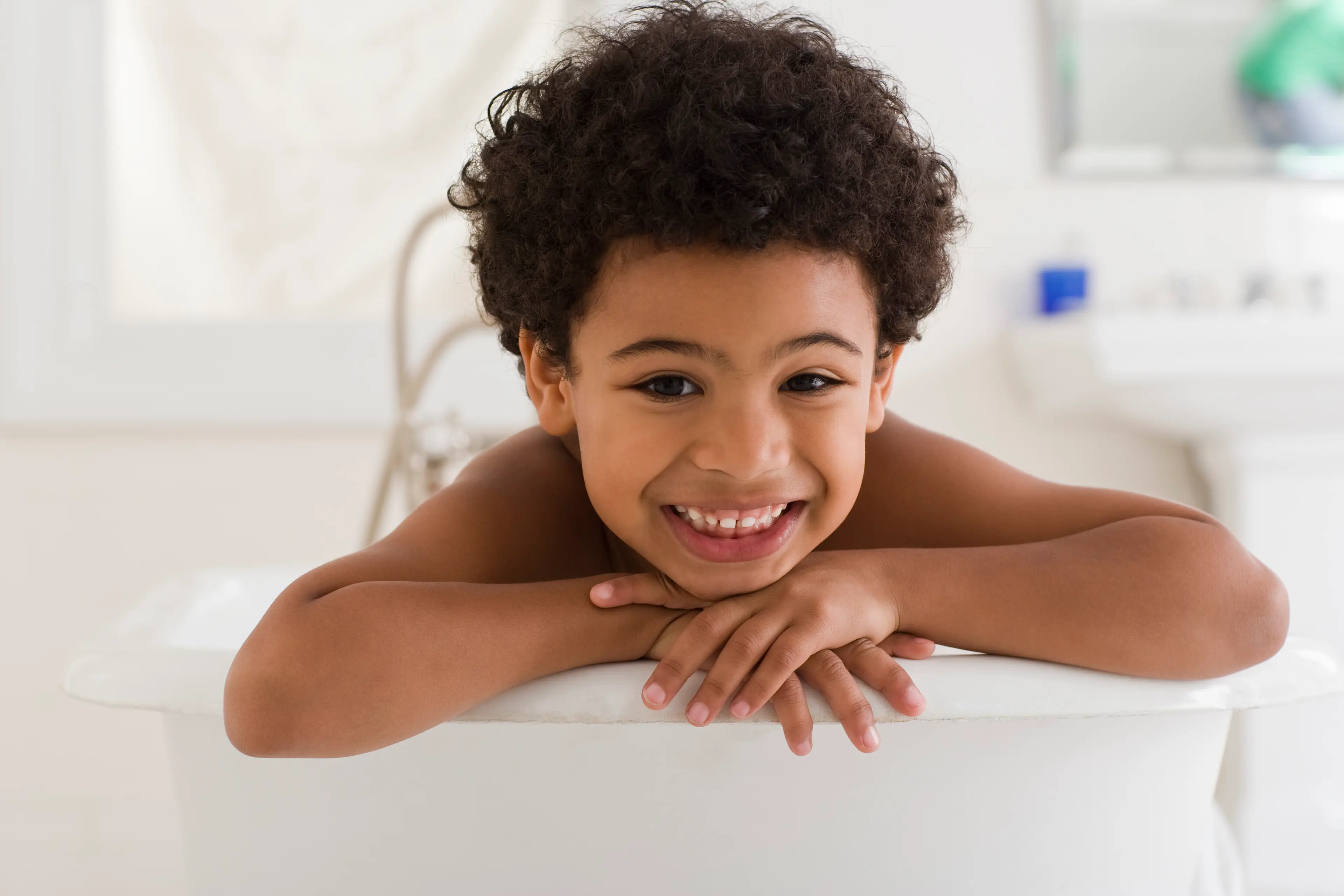Taking care of your child’s skin is just as important as minding what they eat or how much sleep they get. From an early age, your child’s skin is super sensitive because they have much thinner skin than adults. Their immune system is also not fully developed, so their skin isn’t strong enough to deal with the multiple irritants in the environment.
Some of these irritants can lurk in the same products you use to wash and moisturise your child’s skin every day. This includes soaps, bubble baths, deodorants, and even other household products. By adopting good skin cleaning habits early on, you can teach your child to avoid these irritants as they grow and become more independent.
How to take care of your kid’s skin
It’s important to help your child adopt healthy skincare habits as they grow from a toddler to a young and more independent individual. Some healthy skincare habits include:
Cleaning their skin by bathing regularly
Does your child hate bathing? Well, your goal is to make bathing a comfortable, enjoyable experience to ensure they learn good personal hygiene habits and keep their skin clean. You can make bathing fun by:
Helping them count the number of bubbles they make in a bubble bath
Singing the bubble bath song
Playing with a waterproof toy.
Reading an engaging storybook about bath time.
Telling them their favourite stories
Creating a mini adventure while bathing.
Once they’re happy and comfortable in the bath, the goal is to teach them how to place a washcloth into soapy water and scrub a body part before rinsing.
Drying their skin properly
When your child is done bathing, guide them on how to dry their skin properly. Give them a soft towel and instruct them to gently pat their skin. Tell them not to rub too hard to avoid irritation.
Using child-friendly sunscreen
Sunscreen is essential for skin health. It only takes one instance of severe sunburn to double your child’s chances of getting melanoma as an adult.
Always apply sunscreen on your child’s skin before they go outside to play and encourage them to do so, especially during summer. This protects them from strong ultraviolet sunlight that can damage their skin and lead to wrinkles or even cancer later in life. You can make it into a fun game by teaching your child to spell BEENS. They’ll remember all the spots they need to apply their sunscreen: Back of knees, Ears, around the Eyes, Neck, and Scalp.
But don’t just give them any sunscreen. Choose one that has ingredients which are friendly to your child’s skin. The ideal option is a sunscreen that contains titanium oxide or zinc oxide because these compounds don’t get absorbed by the skin and are less irritating than others.
Moisturising regularly to keep their skin soft and hydrated
Regularly applying moisturiser to your child’s skin can prevent dry skin which can cause flare-ups. Instruct your child to apply lotion, ointment, or cream right after a bath or during cold months when the heating is on.
Moisturising lotions and creams that have a high oil content are best, as they provide a thicker protective layer. Avoid creams and lotions that have scents, as these can trigger a reaction in your child’s skin.
Using products designed for their age as they grow
Remember, your little one’s skin is sensitive because it’s much thinner than an adult’s. It’s therefore important to teach your child good skin cleaning habits using products that won’t irritate them.
Aveeno offers a wide range of child-friendly products such as shampoos, conditioners, and body wash designed specifically for young children. These products can help your child adopt good cleaning habits while being gentle on their skin.
Monitoring their skin
Last but not least, continue to monitor their skin to ensure it remains healthy. Eczema itches can be very irritating, so see if they’re scratching, as doing so can cause an infection. Instruct them not to scratch their skin and be on the lookout for any infections caused by viruses or bacteria. Symptoms of skin infection include bumps containing pus and crusted spots that look different to your child’s eczema.
Building an effective skincare routine for kids
Just like teaching your child how to brush their teeth, you can create a daily skincare routine to help them adopt healthy skincare habits. An effective skin care routine includes:
Bathing – Encourage your child to bath daily using mild soap or a body wash. While bathing, instruct them to concentrate on cleaning their face, underarms, feet, hands, bottom, and groin. Washing under their fingernails is also important.
Washing their face – Guide your child to gently wash their face two to three times a day, and to avoid picking any pimples if they begin to develop3.
Washing and conditioning hair – Instruct your child to wash their hair with shampoo. How often they should wash depends on the kind of hair they have. If they have hair that greases easily, they can wash it once every couple of days, otherwise, they can wait a while longer before washing with shampoo and conditioner.
Encouraging them with positive reinforcement – Finally, be sure to give them lots of words of encouragement. By being positive and assuring, they’ll be more receptive to adopting it into their daily routine.
The ideal skincare routine for kids based on their skin type
It’s important to help your child identify the kind of skin they have from an early age. This way, they can discover the best way to care for it, and which products are right for them. The three common skin types include:
Normal skin
Your child’s skin will be soft in texture and have a smooth tone. There will be no visible flaky patches, red spots, or blemishes. That’s because this type of skin has a good balance of water and oil, as well as great blood circulation.
If your child has normal skin, instruct them to wash their face two to three times a day using plain soap or a mild cleanser, before rinsing to remove sweat and dirt.
Oily skin
This type of skin can be quite oily and acne prone. It usually presents a shiny complexion, pimples, open pores, and blackheads. As hormones influence the production of oil on the skin, a slight change in hormone levels may trigger an outbreak.
For this type of skin, guide your child to wash their face three times a day with plain soap and water. If your child has pimples, advise them not to squeeze or pop them, as this will worsen their acne and increase the inflammation.
Dry skin
This skin can be itchy, scaly, rough, dull, and with almost invisible pores. Dry skin is caused by an unusually high shedding of cells from the outer layer of the skin. This means that the outer layer loses a lot of the natural oils that protect the skin from losing water.
If your child has dry skin, instruct them to wash their face daily with a mild cleanser, which will prevent it from getting drier. After washing, they can moisturise with a child-friendly moisturiser like Aveeno® daily care moisturising lotion.
You can also advise your child to limit taking very hot showers, as this can remove more moisture from their skin. Most children typically have dryer skin during winter when humidity is low, and heating elements push hot air into rooms. During winter, instruct your child to take a warm bath for about 20 minutes, then gently pat their skin, before applying a cream or lotion to lock in moisture.

